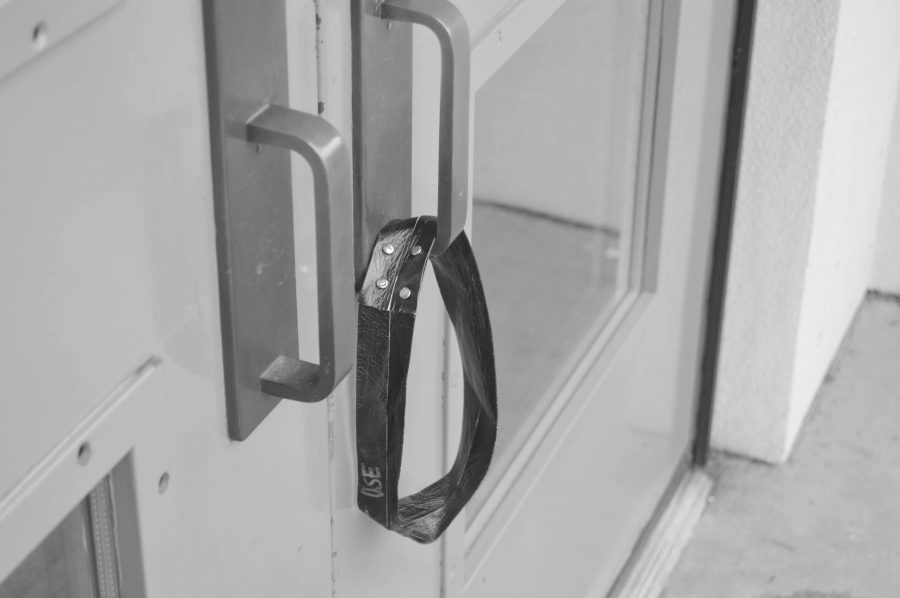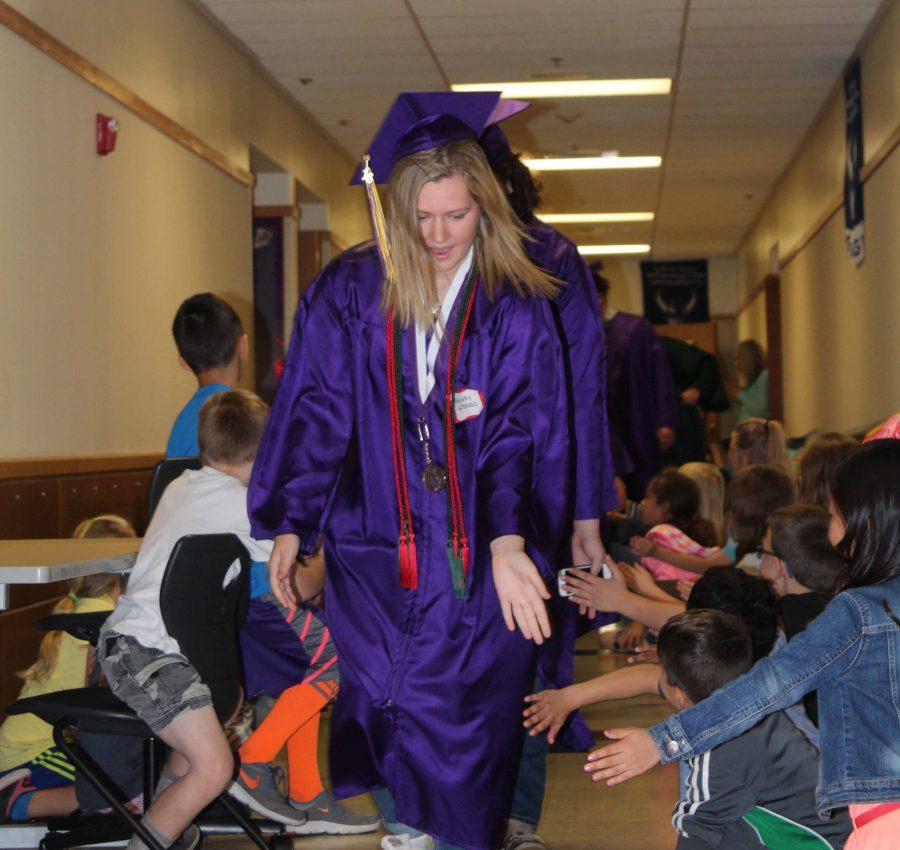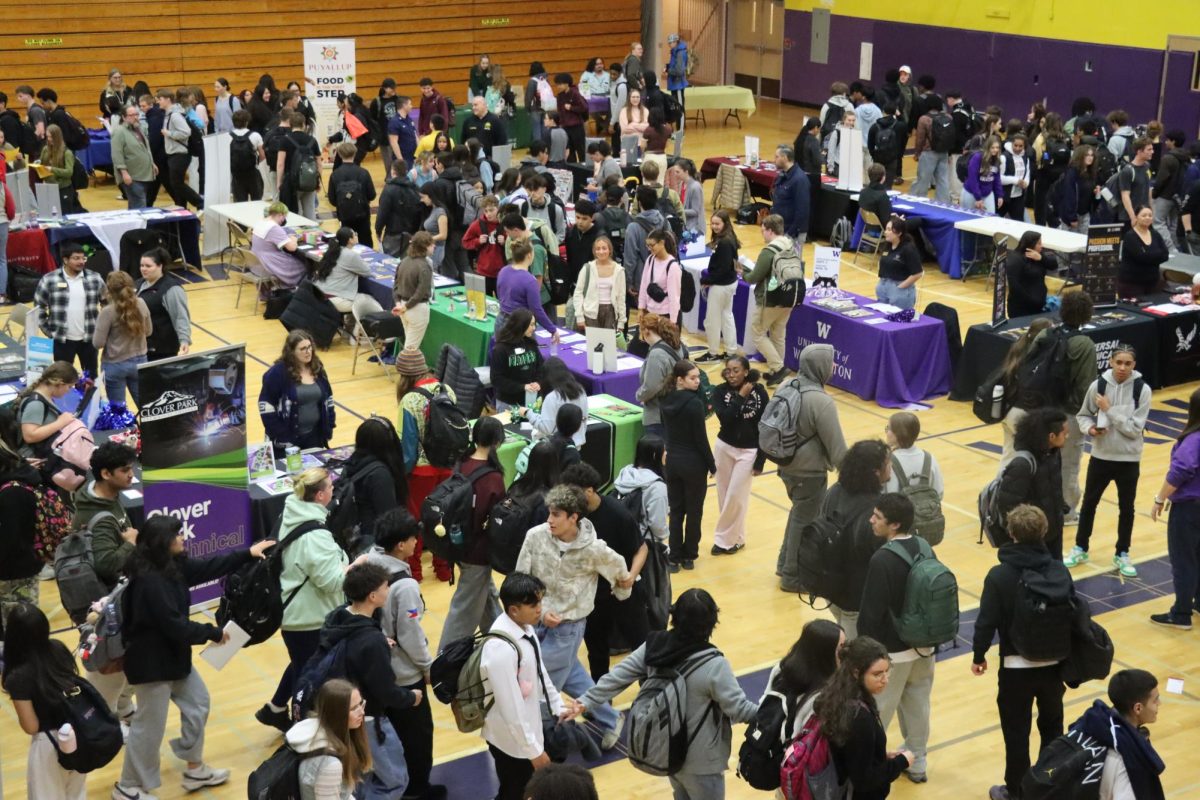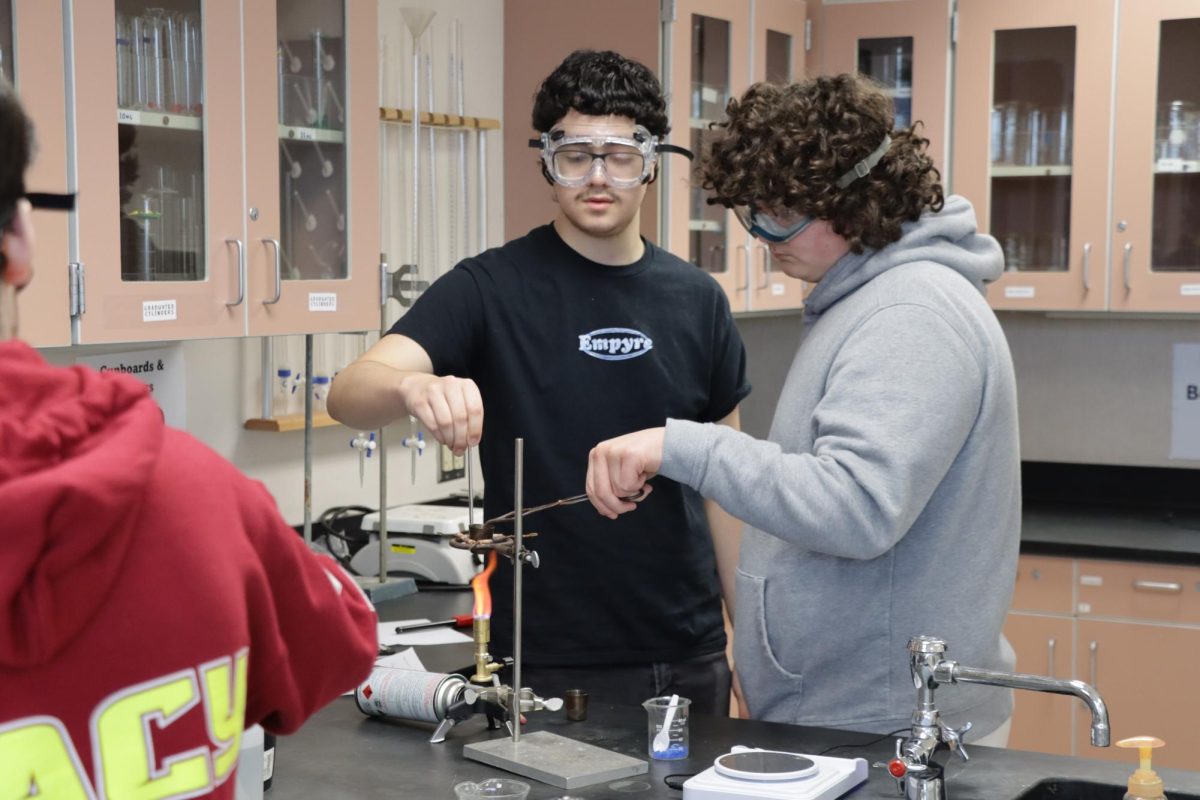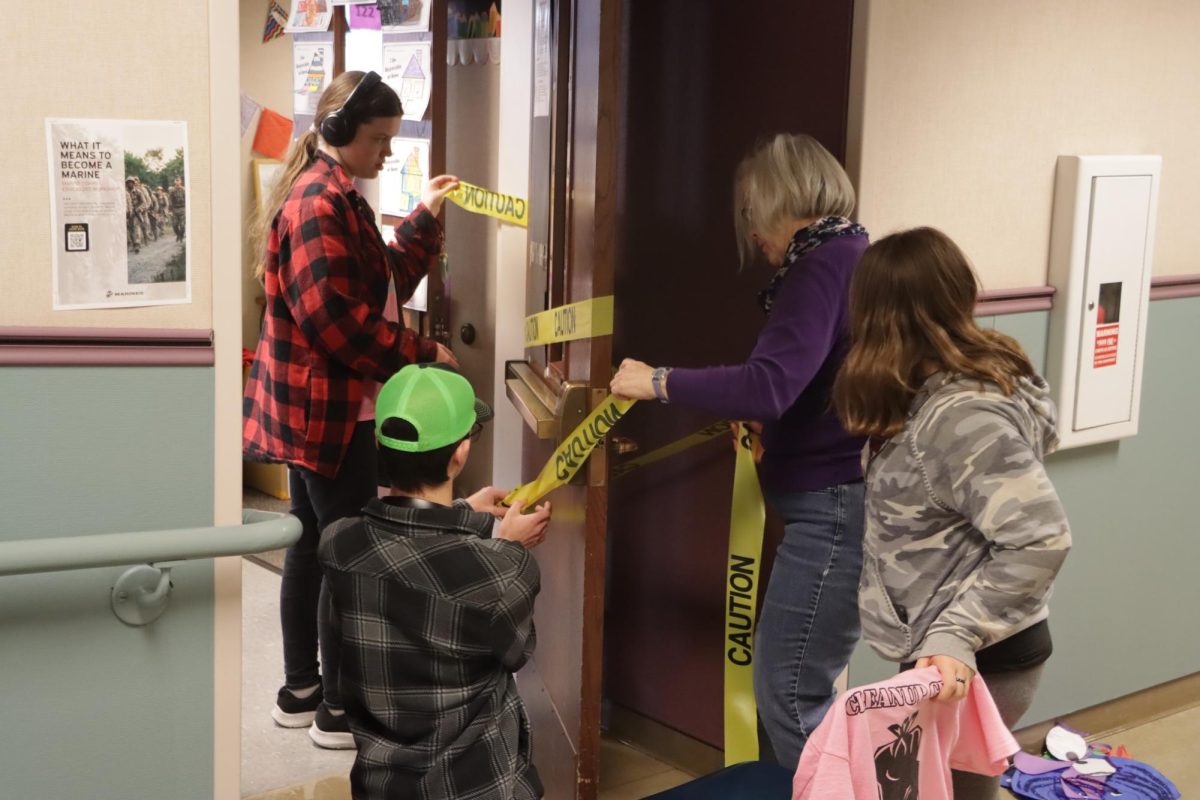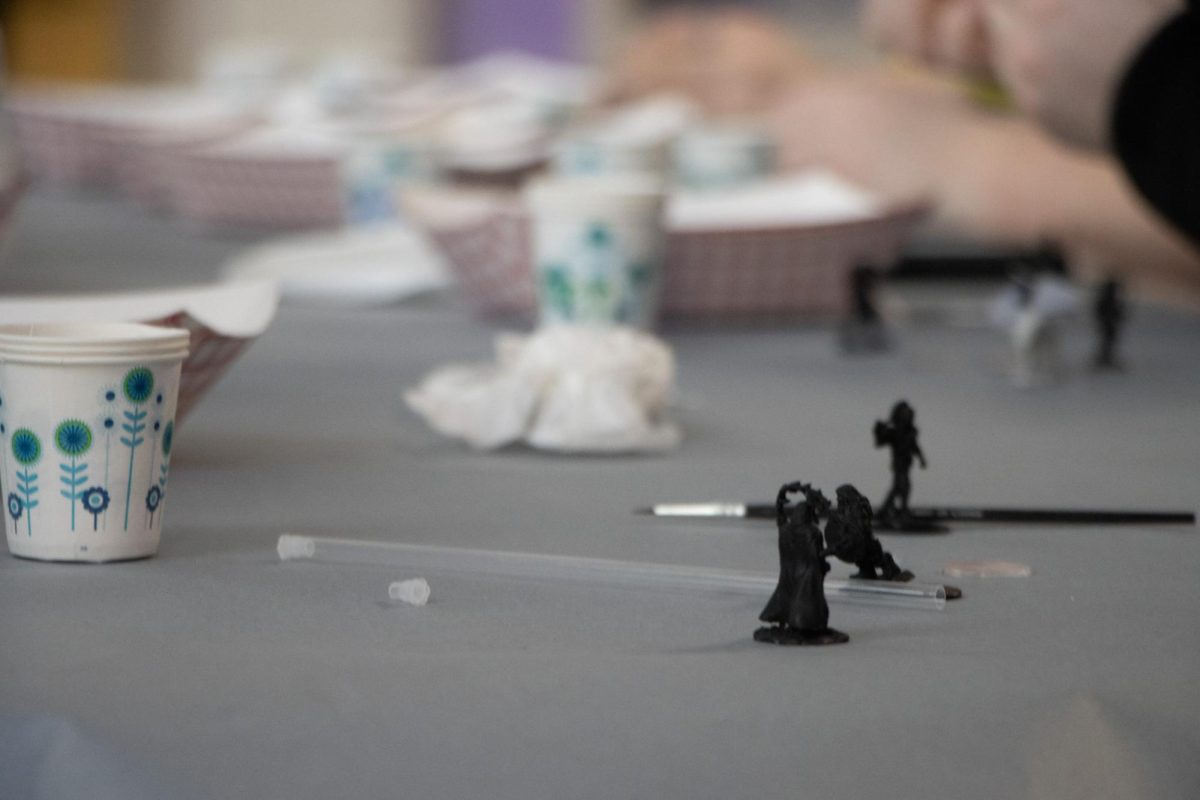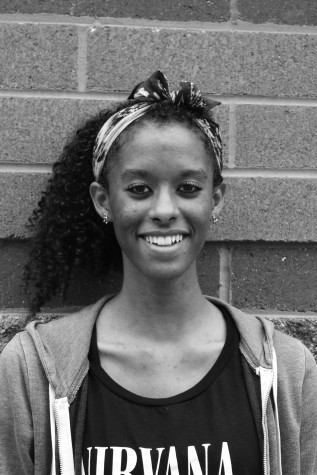Robotics club—it is not about science. It is not about math.
It is about strong work ethic, according to senior Running Start student and four-year club member Dakota Martinson.
“You need hard work. That is what this club teaches. You need to contribute to the team if you are going to get anything out of this club,” Martinson said.
The robotics club has had to adapt to several changes this year, including moving their building site to the STEM room at PHS.
“We used to share a workshop with a different team who had a lot of tools that we did not have and so we were able to share parts and resources for our robots. Since we moved to a different workshop this year, we do not have that anymore,” Martinson said. “We are kind of at an uncomfortable time where we do not have all the parts that we need and oftentimes we do not have the tools that we need. It is kind of hard this year with the changes.”
Though the team has met some difficulty this year, robotics club mentor Emilee Paradis states that the guidance they receive from club leaders and mentors proves to be quite beneficial to the overall success of the club.
“One of the coolest things about this program is how many adults participate in it and how many of those adults then become mentors in the program. People can come into the club not knowing anything and there are all these adult mentors that know how to teach concepts easily to people who may not mathematically understand it but can still teach the concepts in a different way,” Paradis said.
This year, the robotics club is building a new robot for the upcoming competitions that begin in early March.
“We started out with the competition and what the robot has to accomplish. [In the competition] the robot has to hit a 10-inch wide ball into either a goal one foot off the ground or a goal 10 feet off the ground. The robot also has to cross several obstacles to get to the goal, as well defend itself against other robots,” Martinson said.
The robotics team has designed their robot according to the criteria that the competitions call for.
“We are trying to make an altering robot with large wheels that place the robot high off the ground so it can cross as many obstacles as possible. We are using CAD design [Computer Animated Design] to size up the robot and see what part needs to go where,” Martinson said.
According to Martinson, digital resources such as CAD design prove useful in the overall process of creating the robot.
“On the CAD design, we dropped the center wheels of the robot down a little bit so that it tends to sit up on its back with the front wheels up a bit higher to help with the climbing over obstacles. There are also bumpers all around the robot to help defend against the impact of offending robots,” Martinson said.
The robotics competition season began Jan. 9 and club members have until Feb. 22 to completely finish building their robot before the contests in March.
“Before the competitions, we have six weeks to build our robot. After the six weeks are over, we wrap the robot up in a big bag and put a chord on top so no one can touch it,” Martinson said. “Then at the competition we have six hours to unbag the robot and make any changes to it that we may need to make. Then we are randomly paired up with teams to be both teammates and enemies during individual matches.”
The first district competitions in March narrow down qualifying teams to the top eight.
“Based on the average score that you get during each of your matches, you qualify among the top eight teams or below. The teams who qualify in the top eight can choose other teams to join their alliance,” Martinson said.
The teams who qualify amongst the top eight seats of the district event then get to advance to more competitive events.
“If your team does well enough in the district competitions, you then get to move up to regionals which is happening in Portland this year. Then if your team does well enough in those, you then get to go to the World Championship in St. Louis,” Martinson said.
Paradis reveals that the district events are widely attended by all people involved in the robotics program.
“There are about 32 teams that go to the district events. When you add up all the members on each team that go to the competitions, there are about 900 to 3,200 students that go. That does not include students’ friends, families, mentors and so on,” Paradis said.
Though the contests are competitive, Martinson reveals that there is also a lot of cooperation between different teams at the events.
“Since your robot is paired up with three other robots in each match you usually will talk with the other teams ahead of time. You say ‘my robot can do this really well, it can do this okay and this it cannot do at all, so can you guys fill in on that?’ Then you will usually work up a plan where each robot is matched up with its strength ideally,” Martinson said.
Despite the constant teamwork effort, Martinson states that robotics club is not always easy on the individual.
“My least favorite part of building the robot is dealing with the bureaucracy and politics that go along with it. Also, just making sure that everyone is doing their part and making sure everyone is included,” Martinson said.
According to Paradis, the large amount of diversity that comes along with being a part of the robotics team can sometimes prove to be difficult in working towards a common goal.
“Because of how many people there are on the teams, everyone’s weaknesses are really well shown. In terms of project management, it is really hard to figure out where people fit on the team. Different people are not good at doing different things, or they do not know what to do. That is not really their fault but that does make dealing with people hard,” Paradis said.
Though teamwork is a constant effort for robotics members, Paradis reveals that the prevalent diversity also works to the team’s advantage.
“On past teams I have been on, there were really artsy members who would design our logos for us. I think that everyone can contribute to a robotics team and everyone can enjoy it because of how well the robotics program has been made,” Paradis said.
Paradis also refutes some of the misconceptions that follow the reputation of robotics club.
“I think a lot of people have misconceptions that robotics club is only for smart and nerdy people…You do not have to be smart and you do not have to be into math or science to be a part of the team,” Paradis said.
Amongst some of the misconceptions, Martinson reveals that the robotics club is not always as scary as some people might believe.
“Robotics club is all about learning how to build robots. A lot of people say that it is about all these high and mighty things like teaching kids to appreciate science or to learn how they can be this or that, but really what robotics club does is it teaches kids how to solve the competitions and how to just build a robot,” Martinson said.
According to Martinson, all club members contribute something different to the team.
“It all just depends on what you came to the club to do. One member, he came here just to do fundraising for the team and that is nice to have. Some members are setting up a website and that is helpful as well,” Martinson said.
Martinson states that not all people interested in joining robotics club have to know exactly what they want to contribute to the club, only that they want to contribute something.
“I came into this club four years ago knowing nothing at all. Now I am about the most knowledgeable member on the team. A willingness to work is more valuable than anything,” Martinson said.

